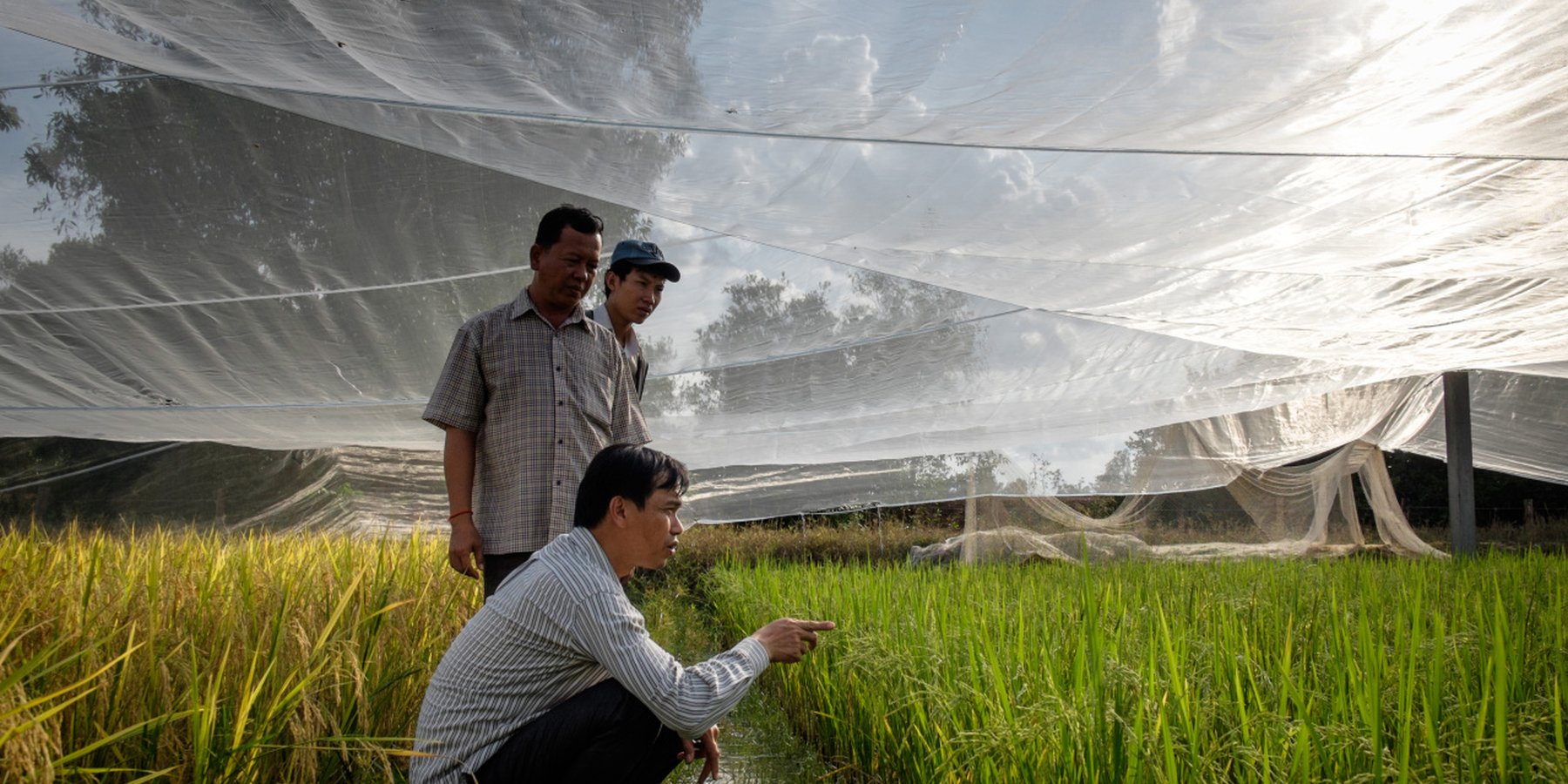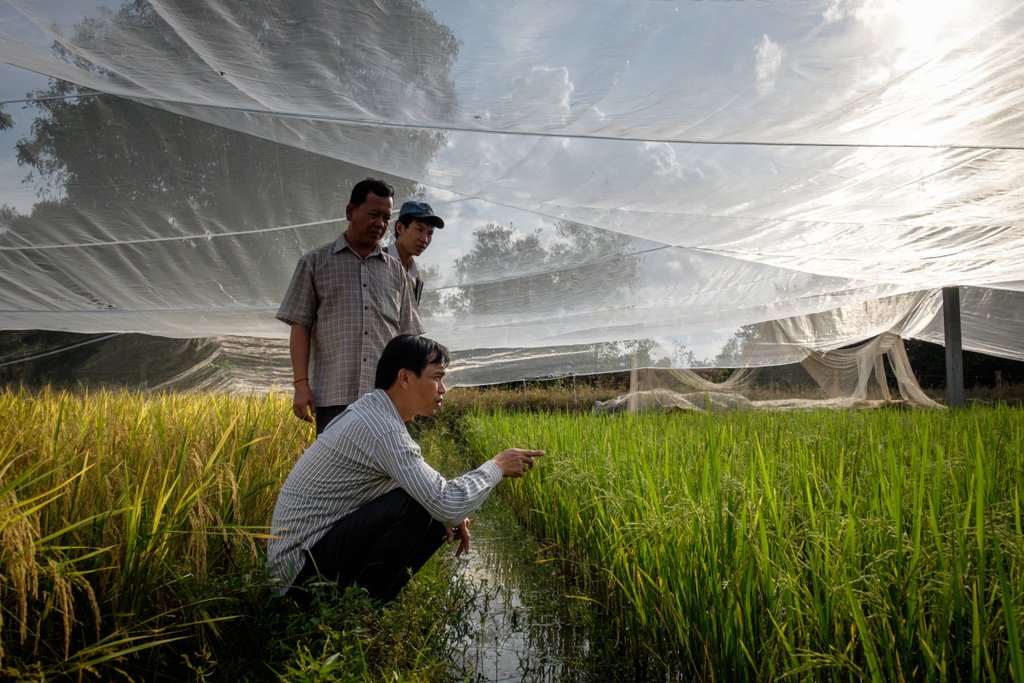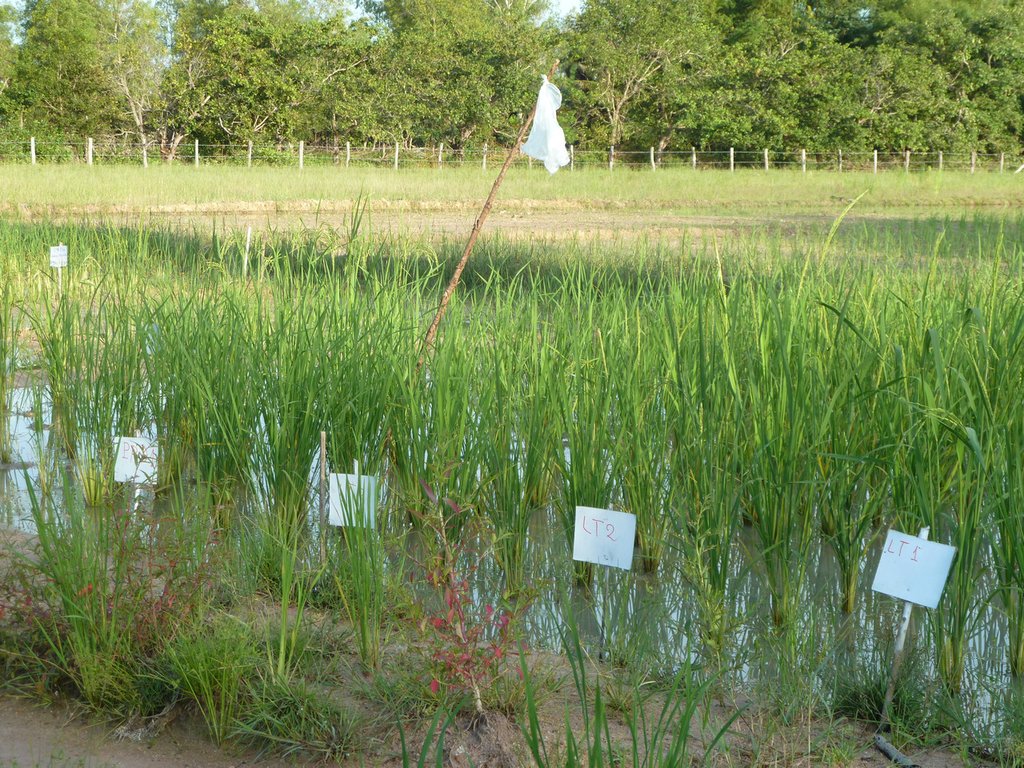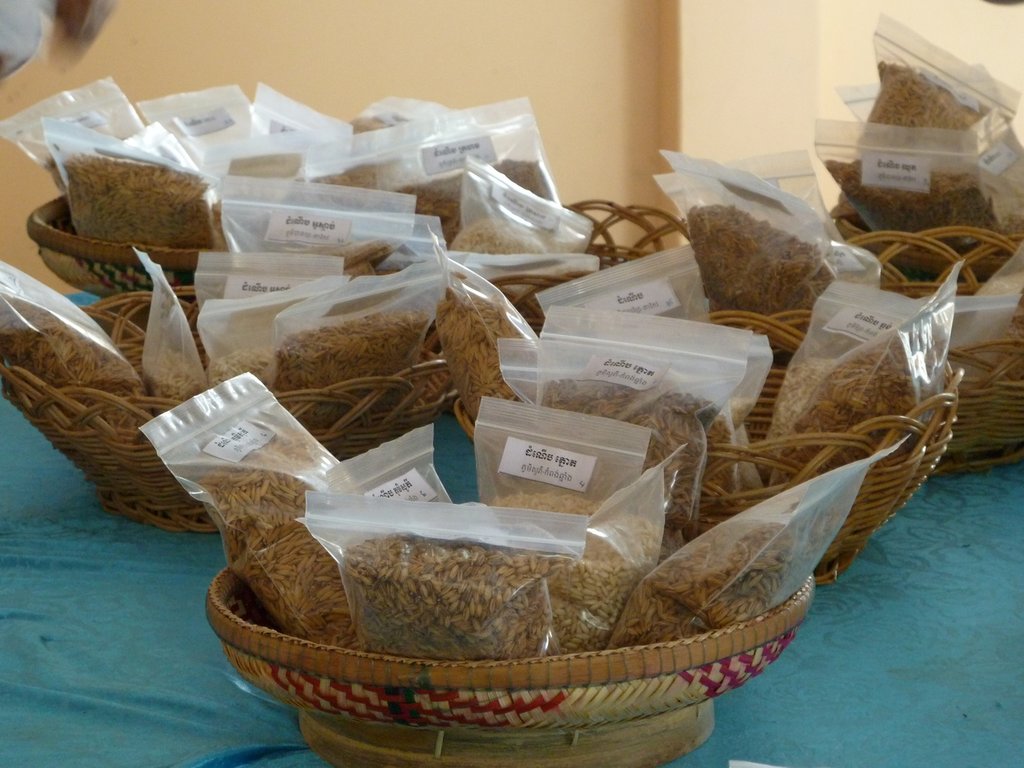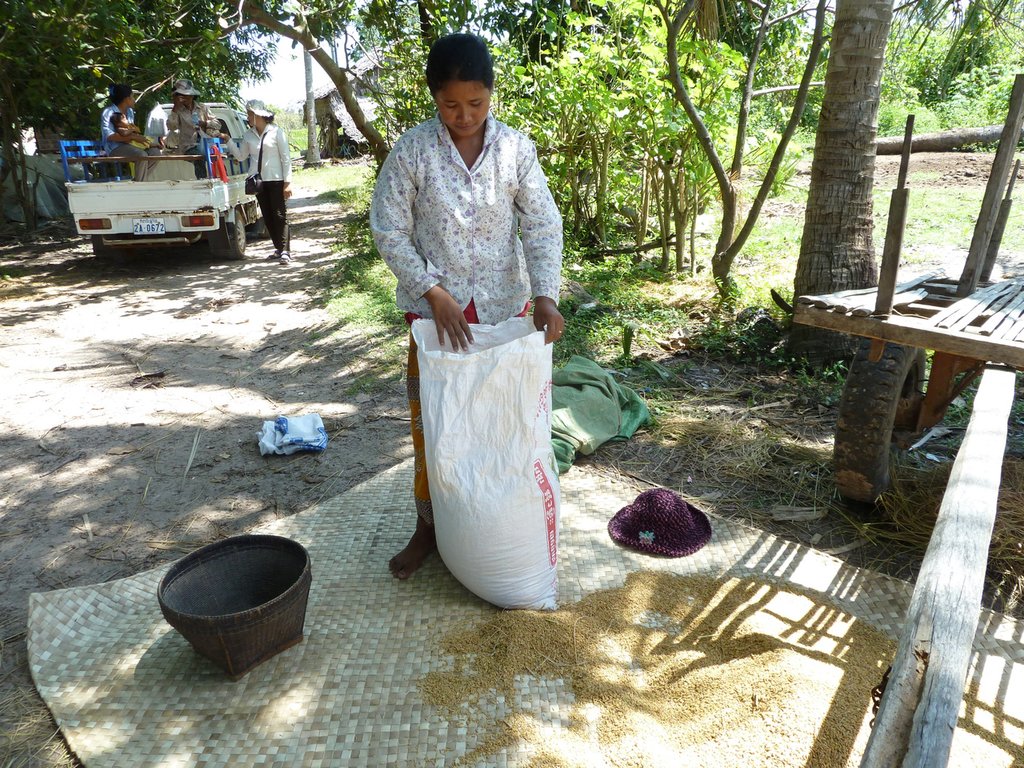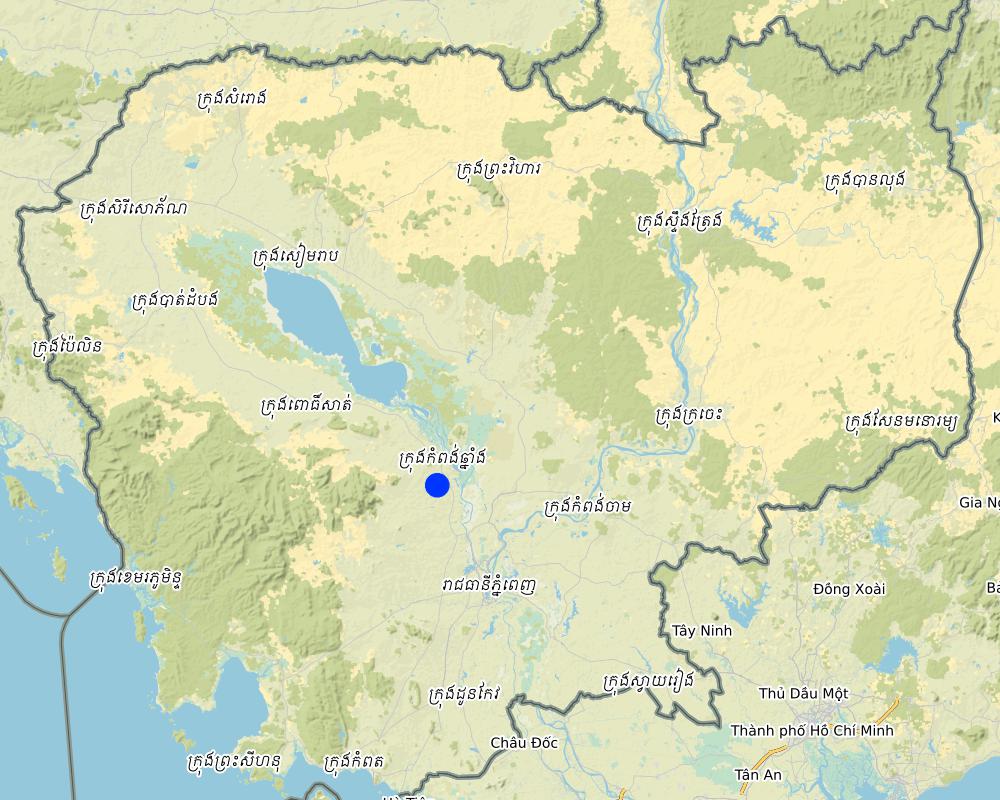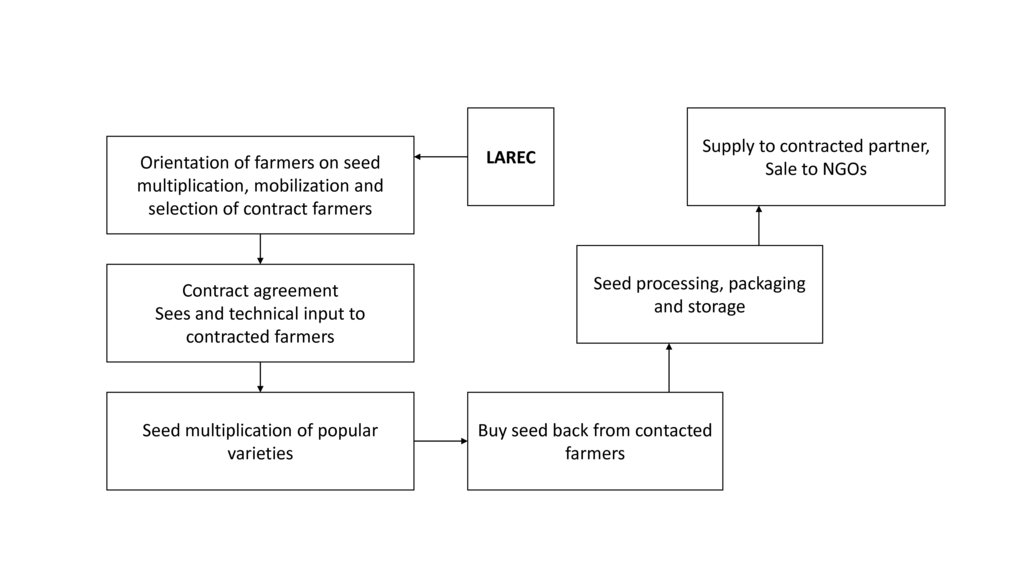Collection, selection, breeding and dissemination of locally adapted rice varieties at the Local Agricultural Research and Extension Centre LAREC. [كمبوديا]
- تاريخ الإنشاء:
- تحديث:
- جامع المعلومات: Stefan Graf
- المحررون: Judith Macchi, Stefan Graf, Christoph Kaufmann, Christine Lottje
- المراجعون: Boris Orlowsky, Alexandra Gavilano, Judith Macchi, Rima Mekdaschi Studer
approaches_1880 - كمبوديا
- Collection, selection, breeding and dissemination of locally adapted rice varieties at the Local Agricultural Research and Extension Centre LAREC.: 29 أغسطس، 2017 (inactive)
- Collection, selection, breeding and dissemination of locally adapted rice varieties at the Local Agricultural Research and Extension Centre LAREC.: 12 مارس، 2021 (inactive)
- Collection, selection, breeding and dissemination of locally adapted rice varieties at the Local Agricultural Research and Extension Centre LAREC.: 12 مارس، 2021 (public)
عرض الأقسام
توسيع الكل طي الكل1. معلومات عامة
1.2 تفاصيل الاتصال بالأشخاص الرئيسيين لمصدر المعلومات والمؤسسات المعنية بتقييم وتوثيق النهج
الشخص (الأشخاص) الرئيسي لمصدر المعلومات
متخصص في الإدارة المستدامة للأراضي:
Khun Lean Hak
kleanghak@yahoo.com / sofdec@camintel.com
SOFDEC/LAREC
www.sofdec.com
كمبوديا
متخصص في الإدارة المستدامة للأراضي:
Pith Khonhel
012 585892
khonhel@gmail.com
LAREC Local Agricultural Research and Extension Centre
www.sofdec.org
كمبوديا
1.3 الشروط المتعلقة باستخدام البيانات الموثقة من خلال WOCAT
متى تم تجميع البيانات (ميدانيا)؟:
01/08/2014
يوافق جامع المعلومات والشخص (لاشخاص) الرئيسي لمصدر المعلومات على الشروط المتعلقة باستخدام البيانات الموثقة من خلال WOCAT:
نعم
2. وصف نهج الإدارة المستدامة للأراضي
2.1 وصف موجز للنهج
Local genetic rice varieties which are better adapted to changing climatic conditions are collected on farms, tested, described, selected or bred into new varieties and again distributed to farmers with the goal to increase their food security
2.2 وصف تفصيلي للنهج
وصف تفصيلي للنهج:
Farmers in the central Cambodian province of Kampong Chhnang increasingly struggle with changing and unpredictable weather patterns and regular weather extremes. Lately, water supply has fluctuated annually due to alternating drought and flood extremes. Harvest yields from farmers in the region are low, amongst others, due to the use of low-quality seed, which is not adapted to local conditions, and which demands for an increase in the use of chemical fertilizers and pesticides.
Acknowledging the fact that with changing climatic conditions, local genetic resources and genetic diversity play a vital role to guarantee food security of smallholder farmers, the Local Agricultural Research and Extension Center – LAREC collects, selects, tests, breeds and disseminates rice varieties, which are better adapted to local conditions. To answer to the climate extremes of drought and flood, LAREC focusses its research on flood tolerant and drought resistant rice varieties.
Over the past years 36 flood tolerant rice varieties have been investigated by LAREC research staff for their floating ability and submergence tolerance. 6 varieties among these are: Pork Kraham, Chung Banla-6, STR010, STR10, STR 011 and Chung Banla-2, have been defined as the most appropriated varieties in term of stem elongation, submergence tolerance and yield. These are multiplied and recommended for farmers in flood prone areas.
Regarding drought tolerance LAREC bred a new variety derived from a cross between Phka Rumduol and IRRI breeding line. This variety is tested in an on farm adaptive trial to see crop performance under farmer practice. The two lines have a short growth duration range from 75 days to 90 days and are non-photo period sensitive. Besides the short growth duration, which makes them appropriate for drought prone areas, the new variety also has a desirable aroma which is important for acceptance and marketing purposes. However, to provide scientific evidence, thorough testing in on-farm trials is needed to see yield performance under farmers’ condition, seed rate application based on cultivation method and fertilizer application.
After the production of basic seed for rice LAREC distributes the seed to contract farmers for multiplication under the supervision of LAREC staff. The multiplied seed is distributed to interested buyers through LAREC and the local farmers' associations.
2.3 صور عن النهج
2.5 البلد/المنطقة/المواقع التي تم تطبيق النهج فيها
البلد:
كمبوديا
المنطقة/الولاية/المحافظة:
Kampong Chhnang
مزيد من التفاصيل حول الموقع:
Rolea Pha-ear
التعليقات:
Area where the seeds are used is 10-100 km2
Map
×2.6 تواريخ بدء وإنهاء تنفيذ النهج
أشر إلى سنة البدء:
2010
2.7 نوع النهج
- قائم على مشروع/برنامج
2.8 الغايات/الأهداف الرئيسية للنهج
Provide high quality seeds of local varieties which are better adapted to changing climatic conditions to the farmers in the area.
2.9 الظروف التي تمكن أو تعيق تنفيذ التقنية/التقنيات المطبقة بموجب النهج
المعايير والقيم الاجتماعية /الثقافية/ الدينية
- تمكين/تمكيني
The founding of LAREC as a local research station was needs-based, as a consequence of increasing exposure of farmer's rice yields to extreme weather events (drought and flood)
- معيق
Farmers are consulted in the selection of seed varieties, but not engaged in the research process.
There is a certain degree of aversion towards local varieties by the farmers, due to lower yields.
توفر/الوصول إلى الموارد والخدمات المالية
- تمكين/تمكيني
The building up of LAREC (warehouse, office building, greenhouse, drying site, trial field) was rendered possible due to funding by SOFDEC/HEKS
المعرفة حول الإدارة المستدامة للأراضي، والوصول إلى الدعم الفني
- تمكين/تمكيني
Highly specialized research personnel working with local varieties adapted to local conditions
- معيق
Only limited knowledge transfer to farmers, as research is conducted in the center, not through a participatory breeding approach
الأسواق (لشراء المدخلات وبيع المنتجات) والأسعار
- معيق
LAREC struggels to become self-sustained by selling the seeds on the local market.
3. المشاركة وأدوار الأطراف المعنية
3.1 أصحاب المصلحة المعنيون بالنهج وأدوارهم
- مستخدمو الأراضي المحليون/المجتمعات المحلية
Farmers
Farmers are involved in the selection of seeds and some contracted farmers act as seed multipliers for LAREC
- المنظمات المجتمعية
Community committees
They play a role to facilitate and promote the seed produced by LAREC. They also support the selection of seeds and follow up on the contracting farmers
- الباحثون
LAREC reserach personnel
Selection, testing, breeding of adapted varieties
- منظمة غير حكومية
SOFDEC
HEKS (Swiss Church Aid)
SOFDEC provided 100% of the funding. SOFDEC staff links LAREC to the farmers and support the collection, dissemination promotion of the seeds and are also collecting feedback from farmers for discussion with LAREC team to find the solution.
HEKS (Swiss Church Aid) is the main backdonor of SOFDEC and hence of LAREC.
- الحكومة الوطنية (المخططون، صانعو القرار)
Cambodian Agricultural Research and Development Institute (CARDI)
CARDI plays an advisory role and also supports the promotion of LAREC.
LAREC is linked to CARDI to exchange on seed multiplication
3.2 انخراط مستخدمي الأراضي المحليين/المجتمعات المحلية في المراحل المختلفة للنهج
| انخراط مستخدمي الأراضي المحليين/المجتمعات المحلية | حدد من شارك وصف الأنشطة | |
|---|---|---|
| المبادرة/التحفيز | سلبي | LAREC was initiated by SOFDEC, as a consequence of an increasing exposure of farmer's rice yields to weather extremes (drought/flood) |
| التخطيط | غير موجود | Planning of the center by SOFDEC |
| التنفيذ | سلبي | LAREC collects seed varieties on farms, tests, selects, breeds and disseminates seed again to farmers. Farmers do the multiplication of seeds and use the adapted varieties for their rice production (own consumption and for the market) |
| الرصد/التقييم | غير موجود | M+E is conducted by LAREC, SOFDEC and HEKS ((internally) as well as by external evaluators (at the end of each project phase) |
| Research | سلبي | Selection of promising varieties is done in consultation with the farmers. Research with the selected crops is done entirely on the LAREC site. |
3.3 مخطط التدفق (إذا كان متاحًا)
3.4 اتخاذ القرار بشأن اختيار تقنية/تقنيات الإدارة المستدامة للأراضي
حدد من الذي قرر اختيار التقنية/التقنيات التي سيتم تنفيذها:
- متخصصون في الإدارة المستدامة للأراضي بشكل أساسي، بعد التشاور مع مستخدمي الأراضي
اشرح:
The selection of the breeding lines is conducted with farmers. Research and testing of the selected varieties is done entirely on the LAREC site, without farmers involvement.
LAREC decides on how and where the adapted varieties were distributed.
حدد على أي أساس تم اتخاذ القرارات:
- نتائج البحوث
- خبرة وآراء شخصية(غير موثقة)
4. الدعم الفني وبناء القدرات وإدارة المعرفة
4.1 بناء القدرات/التدريب
هل تم تقديم التدريب لمستخدمي الأراضي / الأطراف المعنيين الآخرين؟:
نعم
حدد من تم تدريبه:
- مستخدمو الأراضي
شكل التدريب:
- دورات
المواضيع المغطاة:
Contract farmers are trained on seed production and seed storage.
4.2 خدمة استشارية
هل يملك مستخدمو الأراضي وصولا إلى خدمة استشارية؟:
كلا
4.3 تعزيز المؤسسات (التطوير التنظيمي)
هل تم إنشاء أو تعزيز مؤسسات من خلال هذا النهج؟:
- نعم، إلى حد كبير
حدد المستوى (المستويات) التي تم فيها تعزيز أو إنشاء المؤسسات:
- محلي
صف المؤسسة والأدوار والمسؤوليات والأعضاء وما إلى ذلك.
Establishment of a local agricultural research center
حدد نوع الدعم:
- مالي
- بناء القدرات/التدريب
- معدات
4.4 الرصد والتقييم
هل يشكل الرصد والتقييم جزءا من النهج؟:
نعم
التعليقات:
Yearly monitoring of number of land users using selected of new varieties. Ad-hoc measurements of yield (carried out by project staff)
إذا كانت الإجابة بنعم، فهل من المقصود استخدام هذه الوثائق للمراقبة والتقييم؟:
نعم
التعليقات:
The documentation of yield and land users involved is used for measuring outputs and outcomes of the project based on the indicators set in proposal. This is also used for routine monitoring by project staff as well as for mid-term and end project-phase evaluations.
4.5 البحوث
هل كانت البحوث جزءًا من النهج؟:
نعم
حدد المواضيع:
- تكنولوجيا
أعط تفاصيل إضافية وأشر إلى من قام بالبحوث:
Research to select and improve local rice varieties to be better adapted to changing climatic conditions is the main activity of the approach.
5. التمويل والدعم المادي الخارجي
5.1 الميزانية السنوية لمكون الإدارة المستدامة للأراضي في النهج المذكور
إذا لم تكن الميزانية السنوية الدقيقة معروفة، قم بالإشارة إلى نطاقها:
- 100,000-10,000
5.2 الدعم المالي/المادي المقدم لمستخدمي الأراضي
هل حصل مستخدمو الأراضي على دعم مالي/ مادي لتنفيذ التقنية/ التقنيات؟:
كلا
5.3 إعانات لمدخلات محددة (بما في ذلك العمالة)
- معدات
| حدد المدخلات التي تم دعمها | إلى أي مدى | حدد الإعانات |
|---|---|---|
| الآلات | ممول بالكامل | |
| أدوات | ممول بالكامل | |
- بناء
| حدد المدخلات التي تم دعمها | إلى أي مدى | حدد الإعانات |
|---|---|---|
| حجر | ممول بالكامل | |
إذا كان العمل من قبل مستخدمي الأراضي مدخلاً جوهريًا، فهل كان:
- تطوعي
5.4 الائتمان
هل تم توفير ائتمان في إطار نهج أنشطة الإدارة المستدامة للأراضي؟:
كلا
5.5 حوافز أو وسائل أخرى
هل تم استخدام حوافز أو أدوات أخرى لتشجيع تنفيذ تقنيات الإدارة المستدامة للأراضي؟:
كلا
6. تحليل الأثر والتصريحات الختامية
6.1 آثار النهج
هل ساعد النهج مستخدمي الأراضي على تنفيذ وصيانة تقنيات الإدارة المستدامة للأراضي؟:
- لا
- نعم، قليلا
- نعم، باعتدال
- نعم، إلى حد كبير
Farmers have access to seed varieties which are adapted to local conditions (e.g. drought and flood resistance), ensuring that yields are also generated in case of an extreme weather event.
هل أدى هذا النهج إلى تحسين الأمن الغذائي / تحسين التغذية؟:
- لا
- نعم، قليلا
- نعم، باعتدال
- نعم، إلى حد كبير
Through the use of seed varieties which are adapted to local conditions, (e.g. drought and flood resistance) farmers increase their food security by ensuring that yields are also generated in case of an extreme weather event. Farmers are more resilient against extreme weather events.
هل أدى النهج إلى تحسين قدرة مستخدمي الأراضي على التكيف مع التغيرات المناخية/الظواهر المناخية المتطرفة والتخفيف من الكوارث المرتبطة بالمناخ؟:
- لا
- نعم، قليلا
- نعم، باعتدال
- نعم، إلى حد كبير
Through the use of seed varieties which are adapted to local conditions, (e.g. drought and flood resistance) farmers increase their food security by ensuring that yields are also generated in case of an extreme weather event. Farmers are more resilient against extreme weather events.
هل أدى النهج إلى توفير فرص عمل ودخل؟:
- لا
- نعم، قليلا
- نعم، باعتدال
- نعم، إلى حد كبير
Additional income for contract farmers through seed multiplication
6.2 المحفز الرئيسي لقيام مستخدمي الأراضي بتنفيذ الإدارة المستدامة للأراضي
- الحد من مخاطر الكوارث
Adapted varieties also perform in the case of an extreme weather event (drought/flood)
6.3 استدامة أنشطة النهج
هل يمكن لمستخدمي الأراضي المحافظة على استدامة ما تم تنفيذه من خلال النهج (بدون دعم خارجي)؟:
- غير مؤكد
إذا كان الجواب لا أو غير متأكد، حدد ذلك وعلق عليه:
If the seeds are not promoted through a project (e.g. by SOFDEC), it is up to the farmers to buy the adapted varieties.
6.4 نقاط قوة/مزايا النهج
| نقاط القوة/ المزايا/ الفرص من وجهة نظر مستخدمي الأراضي |
|---|
| Seeds of high quality are provided by LAREC. |
| Quality of crops from LAREC-seed is uniform and varieties are demanded on the market, thus contributing to an increasing farmer income. |
| Increased food-security as adapted seeds also perform in the likelihood of an extreme weather event. |
| نقاط القوة/ المزايا/ الفرص من وجهة نظر جامع المعلومات أو غيره من الاشخاص الرئيسيين لمصدر المعلومات |
|---|
| Seeds are collected in the region from the farmers, thus adapted to the local conditions. (They are collected in the research center and in addition the center buys foundation seeds from the Cambodian Agricultural Research and Development Institute (CARDI) in order to scale up). |
6.5 نقاط الضعف/ العيوب في المنهج وطرق التغلب عليها
| نقاط الضعف/ المساوىء/ المخاطر من وجهة نظر جامع المعلومات أو غيره من الاشخاص الرئيسيين لمصدر المعلومات | كيف يمكن التغلب عليها؟ |
|---|---|
| Farmers are still dependent on getting new seeds of the selected varieties (every 3 years for rice) as seeds get mixed and cross pollination occurs. | |
| Lack of money to store the seeds in a proper way. Lack of material (silica gel, oven). | Find external financing sources. Connect with international seed saving organisations if collection and distribution of local ecotypes gets a higher priority. |
| Breeding and selection is not happening on-farm, only at the LAREC centre. Land users remain highly dependent on LAREC to provide new seeds every few years. | Implement participatory plant breeding. Train farmers in selection (already happening with mung bean and rice) and breeding. |
7. المراجع والروابط
7.1 طرق جمع/مصادر المعلومات
- زيارات ميدانية، مسوحات ميدانية
- مقابلات مع مستخدمي الأراضي
- التجميع من التقارير والوثائق الأخرى الموجودة
7.2 المراجع للمنشورات المتاحة
العنوان، المؤلف، السنة، النظام القياسي الدولي لترقيم الكتب ISBN:
Paris, T., et al. 2011. Guide to participatory varietal selection for submergence-tolerant rice. IRRI
متاح من أين؟كم التكلفة؟:
www.irri.org
7.3 روابط للمعلومات ذات الصلة المتوفرة على الإنترنت
العنوان/الوصف:
The Society for Community Development in Cambodia (SOFDEC) is a Cambodian Non-Governmental Organization, established in 2006 through the localization of HEKS (the Swiss Church Aid) project in Kampong Chhnang province, Cambodia. The vision of SOFDEC is that Cambodian people living in Cambodia live a state of comfort, equality, equity, and have ownership over the sustainable development of their community. The mission of SOFDEC works in partnership with community based organizations and relevant institutions through integrated community development, research, human resource development, enhancement of family economies, in the hopes to uplift the living standards of the people in the target areas. Our goal aims to uplift the living standards of the rural people of Cambodia through the improvement in income generation, sustainable agricultural practices, microfinance, health, human resource development, and sustainable natural resource management.
عنوان الرابط URL:
www.sofdec.com
الروابط والوحدات المواضيعية
توسيع الكل طي الكلالروابط
لا يوجد روابط
الوحدات المواضيعية
لا يوجد وحدات مواضيعية


